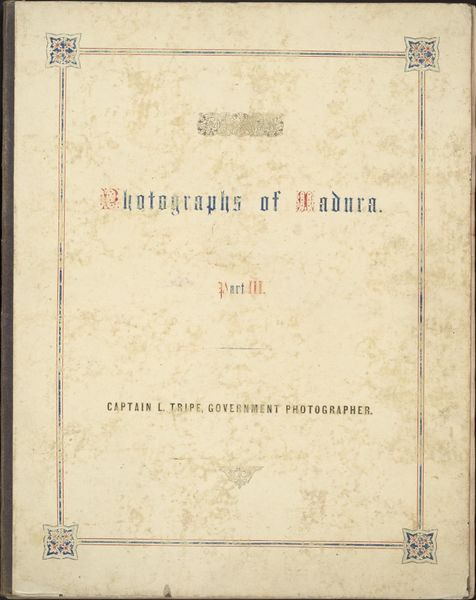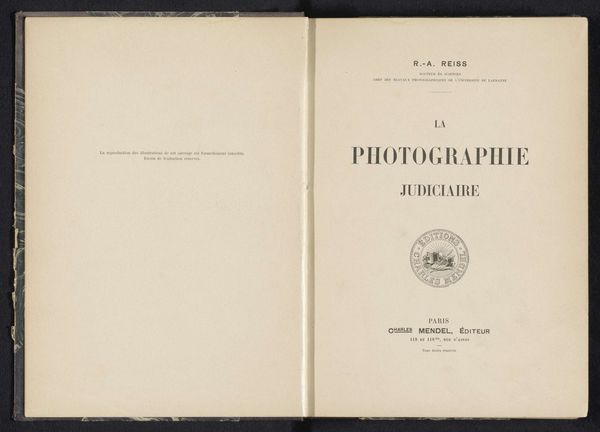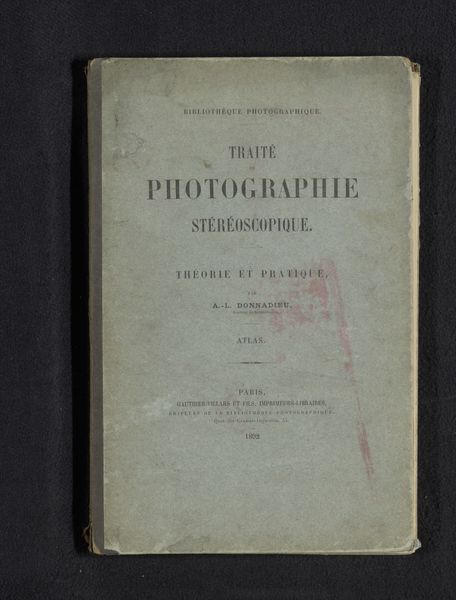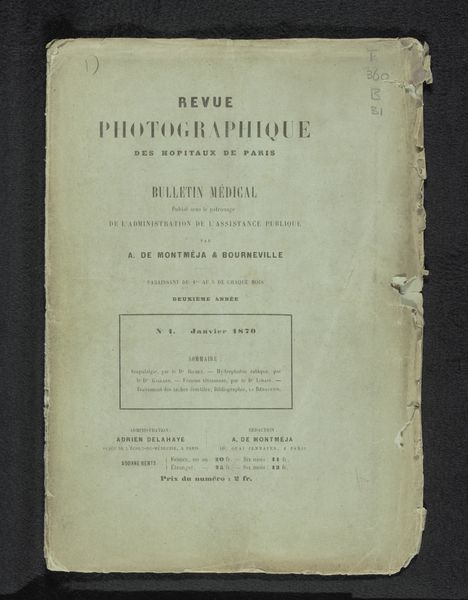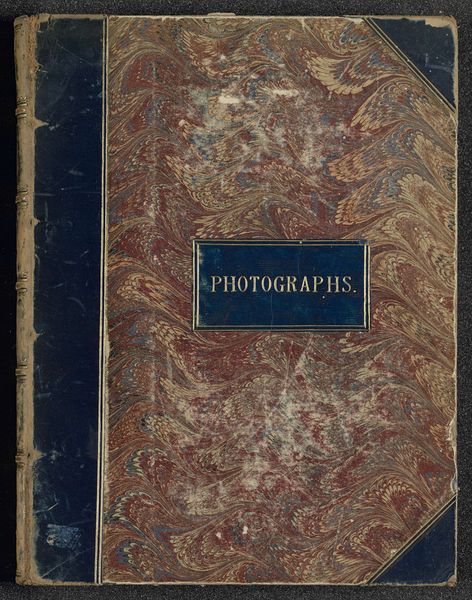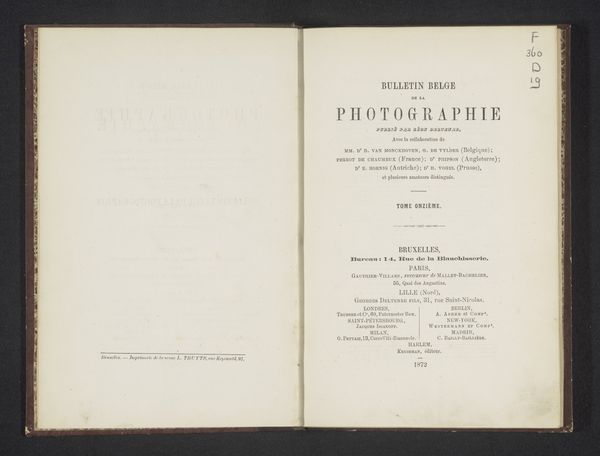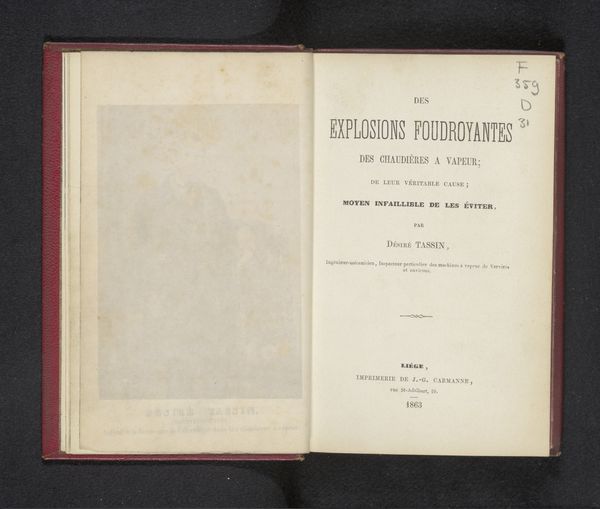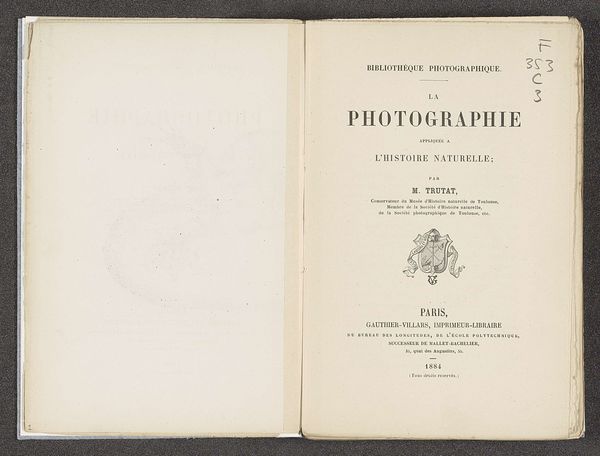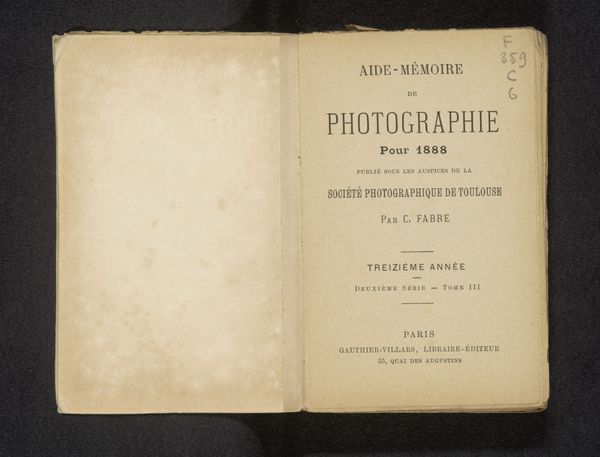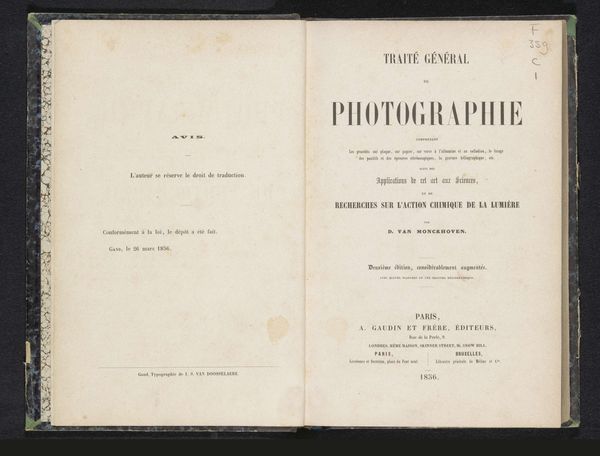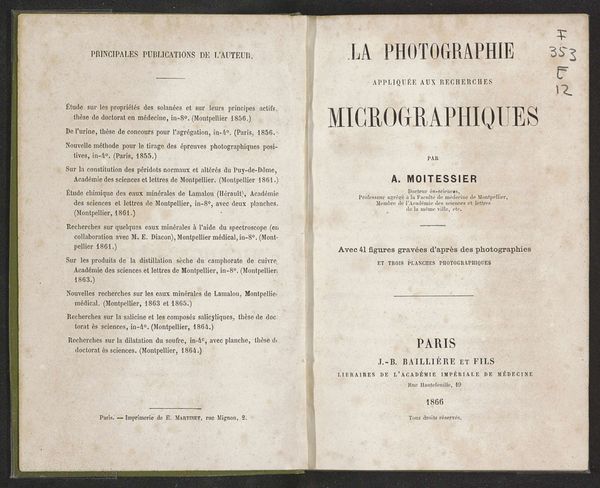
albumen-print, photography, albumen-print
#
albumen-print
#
asian-art
#
photography
#
albumen-print
Dimensions: Overall: 22 5/8 × 17 13/16 × 5/16 in. (57.4 × 45.3 × 0.8 cm)
Copyright: Public Domain
Curator: Looking at this cover, "Photographic Views in Madura, Part I", created by Captain Linnaeus Tripe in 1858 and held at the Metropolitan Museum of Art, my initial feeling is of age and history. The discolored paper and antiquated typography certainly create an impression of great historical importance. Editor: Indeed, you get a real sense of its materiality. The albumen print pasted onto board tells us much about the colonial-era photographic process and production for British officers and bureaucrats, the target demographic. I see it more as an artefact of imperial documentation than merely a set of "views." Curator: Interesting distinction. How so? It appears a typical collection of landscape photography of the time. Editor: Well, consider who Captain Tripe was and his role in documenting British India through photography. This isn't just aesthetic observation; it is information gathering. The British sought knowledge to assert power and to rule a diverse populace, so landscape photography, like the census, served to control resources and define land ownership in India. Curator: I can certainly appreciate the point of such institutional and political considerations. But does it strip the beauty and technical skill the creator put in? Editor: I don’t think so at all! The albumen printing process, its fragility, the very tangible nature of this photographic print adds layers to understanding how those images of Madura would be presented and disseminated to an audience eager to witness an alien culture, its structures and nature reduced and simplified into viewable art objects to own and treasure. Curator: It's a potent thought; a lens shaping both the view and the viewer. So a landscape becomes something much more intentional—a tool for constructing narrative, or even, as you imply, maintaining power dynamics. I'm beginning to see the many different aspects that create the artwork's complexity and richness! Editor: Exactly. Thinking of process as connected with wider purposes really gives me a great lens to understand these pictures. Curator: Yes, seeing it framed that way makes even the aesthetic qualities speak to the larger questions of social context and history that shaped it.
Comments
No comments
Be the first to comment and join the conversation on the ultimate creative platform.
